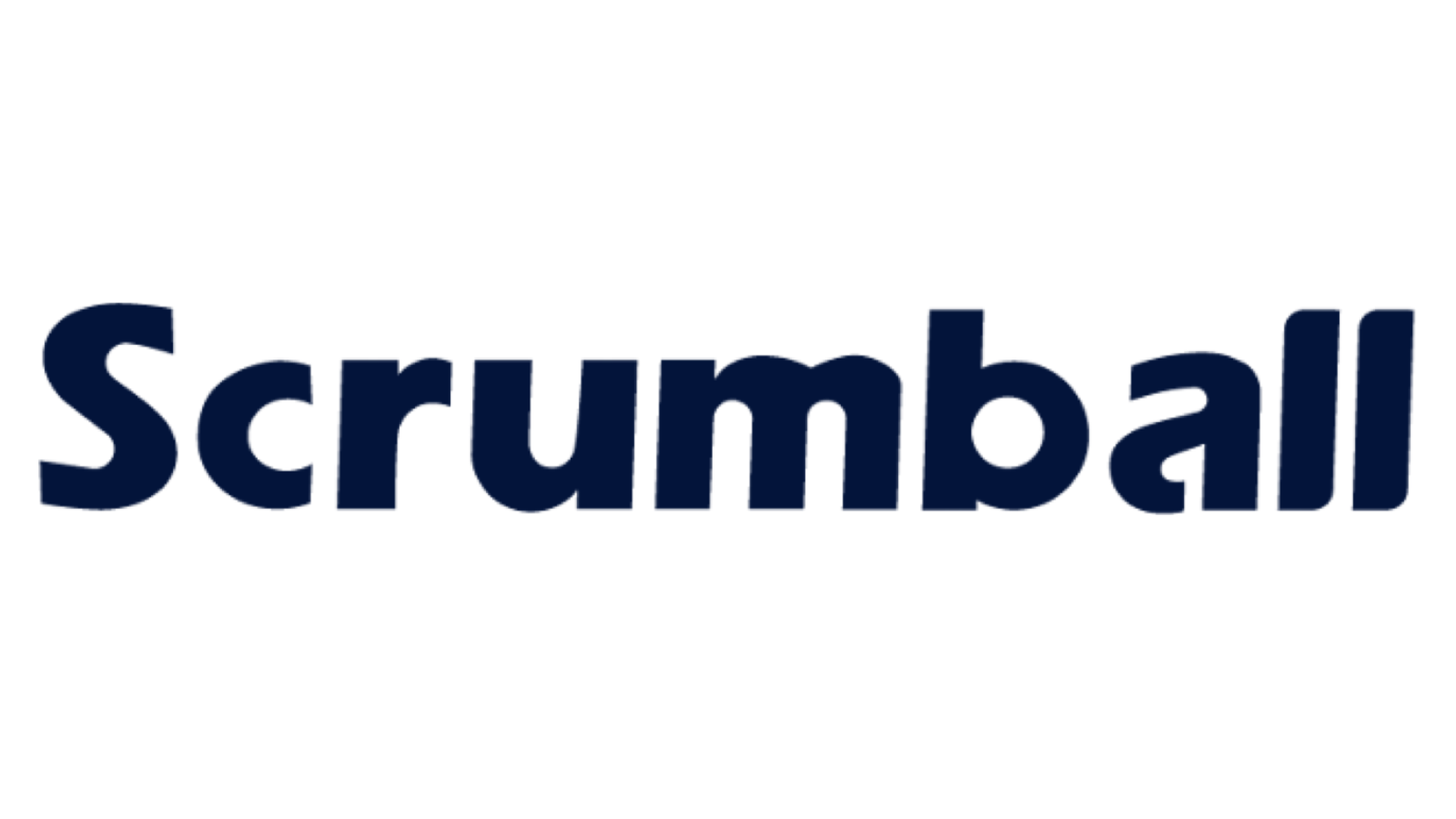Steps to Implement Marketing Automation Effectively in 2025

Marketing automation has become a cornerstone of modern business strategies in 2025. With 75% of businesses already using automation tools and 91% of marketers considering it essential, its adoption continues to rise. This technology simplifies repetitive tasks, enabling you to focus on strategic goals. It also personalizes customer interactions, boosting engagement and conversions. Nearly half of businesses see measurable returns within six months of implementation. Understanding how to implement marketing automation effectively can help you stay competitive and drive growth in today’s fast-paced market.
Define Goals for Marketing Automation
Setting clear goals is the foundation of a successful marketing automation plan. Without defined objectives, your efforts may lack direction and fail to deliver measurable results. By defining your goals, you create a roadmap that aligns automation efforts with your business priorities.
Align Goals with Business Objectives
Your marketing automation goals should directly support your broader business objectives. For example, if your company aims to grow its customer base, you can focus on increasing marketing qualified leads or converting free trial users into paying customers. Other objectives might include reactivating lapsed customers or reducing the time spent on manual tasks like email segmentation. Aligning your goals ensures that every automation effort contributes to measurable business growth.
Identify Metrics for Success
Tracking the right metrics helps you evaluate the success of your marketing automation plan. Common metrics include lead conversion rates, customer acquisition costs, and revenue generated. For instance, lead conversion rates measure how effectively your automation turns prospects into customers. You can also monitor email open and click-through rates to gauge audience engagement. Use these metrics to assess performance and refine your strategy over time.
| Metric | Description |
|---|---|
| Lead conversion rate | Measures the percentage of leads converted into paying customers through automated marketing efforts. |
| Customer acquisition cost (CAC) | Total cost incurred to acquire a new customer through marketing automation efforts. |
| Revenue generated | Insights into the overall impact of marketing automation on the bottom line by tracking revenue generated. |
| Marketing qualified leads (MQLs) | Leads identified as potential prospects based on interactions with automated marketing campaigns. |
| Email open and click-through rates | Gauges audience engagement levels with automated content through email campaign performance metrics. |
Set Milestones for Progress
Breaking your marketing automation plan into milestones helps you track progress and stay on course. Start by defining clear objectives for each phase of your project. For example, you might aim to complete audience segmentation within the first month or launch your first automated campaign by the second month. Use SMART criteria—specific, measurable, achievable, relevant, and time-bound—to ensure milestones are realistic. Engage your team in the planning process to foster accountability and gather diverse insights. Regularly monitor progress and adjust milestones as needed to adapt to changing requirements.
By defining your goals, identifying success metrics, and setting milestones, you create a structured approach to marketing automation. This clarity ensures that your efforts remain focused and aligned with your business objectives.
Understand Your Audience and Customer Journey

Understanding your audience and their journey is essential for effective marketing automation. This step ensures your campaigns resonate with your customers, driving better customer engagement and results.
Conduct Audience Research
Audience research helps you uncover what your customers need and value. Regularly analyze your audience to identify emerging trends and adapt your strategy. Use audience intelligence tools to discover where your customers spend time online and what topics interest them. Invest in platforms that provide insights into media consumption patterns. Focus on understanding their pain points and preferences to create campaigns that truly connect. Staying updated on these insights ensures your marketing automation efforts remain relevant and impactful.
Map the Customer Journey
Mapping the customer journey allows you to visualize how customers interact with your brand. Use tools like Smaply or Gliffy for simple mapping needs. For more advanced features, consider Aiava or Custellence, which offer collaboration and detailed visualizations. Platforms like Flowmapp and JourneyTrack provide user flow planning and persona support. By mapping the journey, you can identify key touchpoints where marketing automation can enhance customer engagement. This process ensures your campaigns address customer needs at every stage.
Segment for Personalization
Customer segmentation is a powerful way to improve personalization in marketing automation. By dividing your audience into specific groups based on their preferences and behaviors, you can create tailored campaigns that resonate with each segment. For example, you might target one group with product recommendations while another receives educational content. This approach makes your marketing more relevant and engaging, leading to stronger customer relationships and better results.
By conducting research, mapping journeys, and segmenting your audience, you can optimize your marketing automation strategy. These steps ensure your efforts align with customer needs, driving meaningful engagement and business growth.
Select the Right Marketing Automation Platform
Choosing the right marketing automation platform is a critical step in your journey. The platform you select will determine how effectively you can execute your strategy and achieve your goals. By evaluating features, ensuring scalability, and assessing usability, you can make an informed decision.
Evaluate Features and Capabilities
When evaluating platforms, focus on features that align with your business needs. Look for tools with robust segmentation capabilities, lead management, and scoring systems. These features allow you to prioritize high-value accounts using AI and predictive analytics. Platforms with strong analytics and reporting tools are also essential. They provide actionable insights to measure campaign success and refine your strategy.
Some of the top marketing automation platforms in 2025 include:
- Mailchimp: Ideal for small and medium businesses, offering audience segmentation and multichannel marketing.
- Hootsuite: Specializes in social media management with automated scheduling and analytics.
- Iterable: Excels in cross-channel engagement with dynamic segmentation and AI-driven personalization.
Evaluate these options based on your specific requirements to find the best fit.
Ensure Scalability and Integration
Scalability is vital as your business grows. A scalable platform can handle increasing data, contacts, and campaigns without compromising performance. This ensures your marketing automation efforts remain consistent and effective over time.
Integration is equally important. Connecting your platform with CRM systems and analytics tools creates a seamless data flow. This integration provides a comprehensive view of customer interactions, enabling informed decision-making. For example, integrating marketing automation with CRM enhances lead tracking and customer management. A well-integrated system supports your growth and improves efficiency.
Assess Usability and Support
Ease of use is a key factor when selecting marketing automation tools. A user-friendly interface ensures your team can quickly adapt to the platform. Look for platforms that offer intuitive navigation and clear workflows.
Support is another critical consideration. Reliable customer support can save time and prevent disruptions. Choose a platform with accessible support channels, such as live chat or dedicated account managers. This ensures you have the help you need when challenges arise.
By carefully evaluating features, scalability, and usability, you can select a marketing automation platform that meets your needs and drives success.
Build a Marketing Automation Strategy
A well-structured marketing automation strategy is essential for achieving your business goals. It helps you streamline processes, engage customers effectively, and generate more qualified leads. By focusing on targeted campaigns, lead nurturing, and dynamic content, you can maximize the impact of your efforts.
Develop Targeted Campaigns
Targeted campaigns allow you to deliver personalized messages to specific audience segments. These campaigns address customer needs and behaviors, increasing the likelihood of conversion. For example, you can create abandoned cart campaigns to re-engage shoppers who left items in their carts. Set a trigger based on their activity, wait 24 hours, and send a reminder email. If the purchase remains incomplete, follow up with another message.
Other examples include customer re-engagement campaigns and loyalty level assignments. These campaigns keep your audience engaged and encourage repeat purchases. Use marketing automation to build your workflows for these campaigns. This approach ensures consistency and saves time while driving better results.
Automate Lead Nurturing
Lead nurturing is a critical component of any marketing automation strategy. It involves guiding prospects through the buyer's journey with relevant content. Automation allows you to deliver personalized messages based on user behavior. For instance, if a lead downloads a whitepaper, you can send follow-up emails with related resources.
Automated workflows simplify this process. They help you build your workflows to deliver the right content at the right time. This approach generates more qualified leads by keeping prospects engaged and informed. Over time, these efforts increase conversion rates and improve customer satisfaction.
Use Dynamic Content
Dynamic content enhances the effectiveness of marketing automation by personalizing your messaging. It adapts to individual preferences and behaviors, making your campaigns more relevant. For example, you can display product recommendations based on a user's browsing history.
This level of personalization boosts engagement and drives higher conversion rates. Dynamic content also improves your return on investment by ensuring your messages resonate with your audience. Incorporating it into your marketing automation strategy helps you stand out in a competitive market.
By developing targeted campaigns, automating lead nurturing, and using dynamic content, you can build a robust marketing automation strategy. These steps ensure your efforts align with customer needs, leading to better engagement and more qualified leads.
Steps for Implementing Marketing Automation Tools

Integrate with CRM and Analytics
Integrating marketing automation tools with your CRM and analytics systems ensures seamless data flow and better decision-making. Follow these steps to achieve a smooth integration:
- Define your integration goals. Identify specific challenges you want to address, such as improving lead tracking or enhancing customer insights.
- Clean and standardize your data. Remove duplicate entries and ensure consistency in data formats to avoid errors during integration.
- Choose the right integration tools. Decide between native integrations, third-party connectors, or custom APIs based on your business needs.
- Map out the customer journey. Understand key touchpoints to facilitate effective data exchange between systems.
- Establish clear communication channels. Foster collaboration between your marketing and sales teams to align efforts and maximize success.
A well-integrated system enhances your marketing automation implementation by providing a unified view of customer interactions. This step lays the foundation for a successful marketing automation implementation.
Test and Refine Workflows
Testing and refining workflows is essential for optimizing your marketing automation efforts. Start by tracking key metrics like leads generated and conversion rates. Use A/B testing to evaluate different elements of your campaigns. For example, test subject lines, calls-to-action, or landing page designs to identify what resonates most with your audience.
Regularly analyze test results to implement improvements. If one version of a campaign outperforms another, incorporate those insights into future workflows. Continuously monitor KPIs to ensure your workflows align with your goals. This iterative process helps you refine strategies and achieve better results over time.
Monitor and Adjust Performance
Monitoring performance is crucial for maintaining the effectiveness of your marketing automation tools. Track engagement and conversion rates to measure content success. Analyze customer lifecycle metrics to identify critical touchpoints where automation can make the most impact.
Incorporate attribution modeling to understand which campaigns drive the highest ROI. Use this data to allocate your budget efficiently. Regularly review KPIs to evaluate the success of your marketing automation implementation. Adjust your strategies based on these insights to ensure continuous improvement.
"Regularly monitoring KPIs to evaluate the success of marketing automation efforts offers valuable insights into what works and what needs adjustments."
By integrating systems, refining workflows, and monitoring performance, you can ensure a successful marketing automation implementation. These steps for implementing marketing automation tools will help you achieve your business goals effectively.
Train Teams and Optimize Continuously
Training your team and optimizing processes are essential for successful marketing automation. These steps ensure your team uses the tools effectively and adapts to evolving trends.
Provide Team Training
Proper training equips your team to handle marketing automation tools confidently. Start with comprehensive training sessions that include detailed tutorials and hands-on workshops. These sessions help your team understand the platform's features and how to apply them to real-world scenarios.
Custom-tailored training programs designed by consultants can address varying technical capabilities within your team. This approach ensures everyone, from beginners to advanced users, can exploit the tools' powerful features. Continuous support, such as helpdesk services or regular Q&A sessions, keeps your team updated and resolves challenges promptly.
Encourage peer learning by fostering an environment where team members share tips and best practices. This collaborative approach strengthens your team's skills and builds confidence.
Introduce the tools gradually to avoid overwhelming your team. Allow them time to adjust while maintaining productivity.
Establish Feedback Loops
Feedback loops are vital for optimizing your marketing automation processes. Use customer feedback to enhance your campaigns and services. Analyze performance data, such as engagement metrics from Facebook ads, to refine your strategies. Behavioral progressive profiling helps you understand your customers' awareness stages, enabling timely and relevant communications.
Incorporate feedback at every stage of your business. This continuous optimization ensures your marketing automation efforts remain effective and aligned with customer needs. By listening to your audience and analyzing their behavior, you can deliver personalized communications that resonate.
Stay Updated on Trends
Staying informed about the latest trends in marketing automation keeps your strategy competitive. AI-powered automation is transforming the landscape by improving task efficiency and enabling deeper personalization in campaigns. Omnichannel marketing has become essential as customers expect seamless experiences across platforms.
Advanced analytics provide valuable insights into customer behavior. These insights help you refine segmentation and create targeted messaging that drives results. By staying updated, you can adapt your strategy to meet changing demands and maintain a successful marketing automation framework.
Overcome Challenges in Marketing Automation Implementation
Implementing marketing automation can transform your business, but it comes with challenges. Addressing these obstacles ensures your marketing automation project plan stays on track and delivers results.
Resolve Data Integration Issues
Data integration often becomes a stumbling block in marketing automation. Decentralized data across multiple systems complicates reporting and decision-making. To overcome this, start by auditing all data sources. Identify where customer data resides and set up an integration architecture to aggregate it. Use dimensional modeling techniques to organize data while ensuring compliance with regulations like GDPR and CCPA.
Refine and enrich your data to create comprehensive customer profiles. Incorporate identity resolution and external data sources to enhance accuracy. Implement continuous validation and automated quality checks to maintain data integrity. These strategies streamline data flow, enabling your team to make informed decisions and execute effective marketing automation strategies.
Avoid Over-Automation
Over-automation can alienate your audience and reduce engagement. Balance automation with human interaction to maintain a personal touch. Personalize communications by addressing customers by name and sending relevant recommendations. For example, an abandoned cart campaign can include a friendly reminder email with product suggestions tailored to the customer’s preferences.
Incorporate customer feedback into your campaigns. Use surveys and social media interactions to understand what resonates with your audience. These strategies help you refine your marketing automation efforts and reduce cart abandonment while maintaining authenticity.
Ensure Privacy Compliance
Privacy compliance remains a top priority in 2025. Customers expect transparency and control over their data. Start by maintaining clear and updated privacy policies. Obtain explicit consent before collecting data and ensure users can easily revoke it.
Minimize data collection by focusing only on what is necessary for your campaigns. Conduct regular audits to ensure adherence to privacy regulations. Transparency about how you use customer data builds trust and strengthens your marketing automation strategies.
By resolving data integration issues, avoiding over-automation, and ensuring privacy compliance, you can overcome common challenges in marketing automation. These strategies help you create a seamless and effective marketing automation project plan.
Implementing marketing automation effectively requires a structured approach. Start by assessing your current efforts and defining clear goals. Select tools that align with your needs, map the customer journey, and create automated workflows. Regularly monitor performance and refine strategies to stay on track. These steps help you grow marketing qualified leads, reactivate lapsed customers, and reduce time spent on manual tasks.
Continuous improvement is key to long-term success. Automation enhances lead management, personalizes customer experiences, and drives data-driven decisions. Businesses often see increased revenue and improved customer retention within the first year.
Now is the time to embrace marketing automation. Begin your journey today to streamline processes, scale your efforts, and deliver exceptional customer experiences.
FAQ
What is marketing automation, and why is it important?
Marketing automation uses software to streamline repetitive tasks like email campaigns and lead nurturing. It helps you save time, improve efficiency, and focus on generating more leads. This technology also personalizes customer interactions, increasing engagement and driving better results for your business.
How can marketing automation help generate more leads?
Marketing automation identifies potential customers through behavior tracking and segmentation. It nurtures these leads with personalized content, guiding them through the sales funnel. Automated workflows ensure timely follow-ups, improving the chances of conversion and helping you grow your lead base effectively.
What are the best practices for nurturing leads with automation?
Focus on delivering relevant content based on customer behavior. Use workflows to send timely follow-ups and educational materials. Segment your audience to ensure personalized communication. Regularly analyze performance metrics to refine your strategy and keep your leads engaged throughout their journey.
How do you measure the success of marketing automation?
Track metrics like lead conversion rates, customer acquisition costs, and revenue growth. Monitor engagement metrics such as email open rates and click-through rates. These insights help you evaluate how well your automation efforts are generating and nurturing leads.
Can marketing automation work for small businesses?
Yes, marketing automation benefits businesses of all sizes. Small businesses can use it to save time, nurture leads, and scale their efforts. Affordable tools like Mailchimp or HubSpot offer features tailored to smaller teams, making automation accessible and effective for growing businesses.
See Also
15 Must-Have Influencer Marketing Platforms for 2024
Seven Key Steps for Crafting Your Influencer Marketing Plan
Seven Critical Steps to Determine Your Content Marketing ROI
